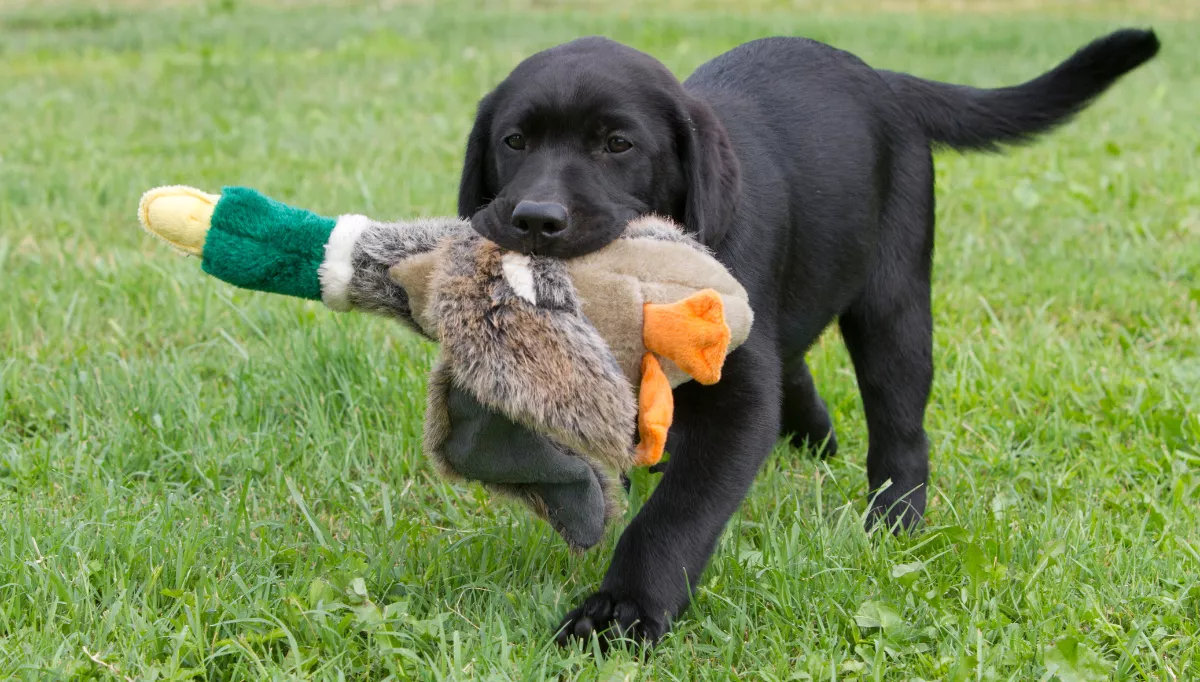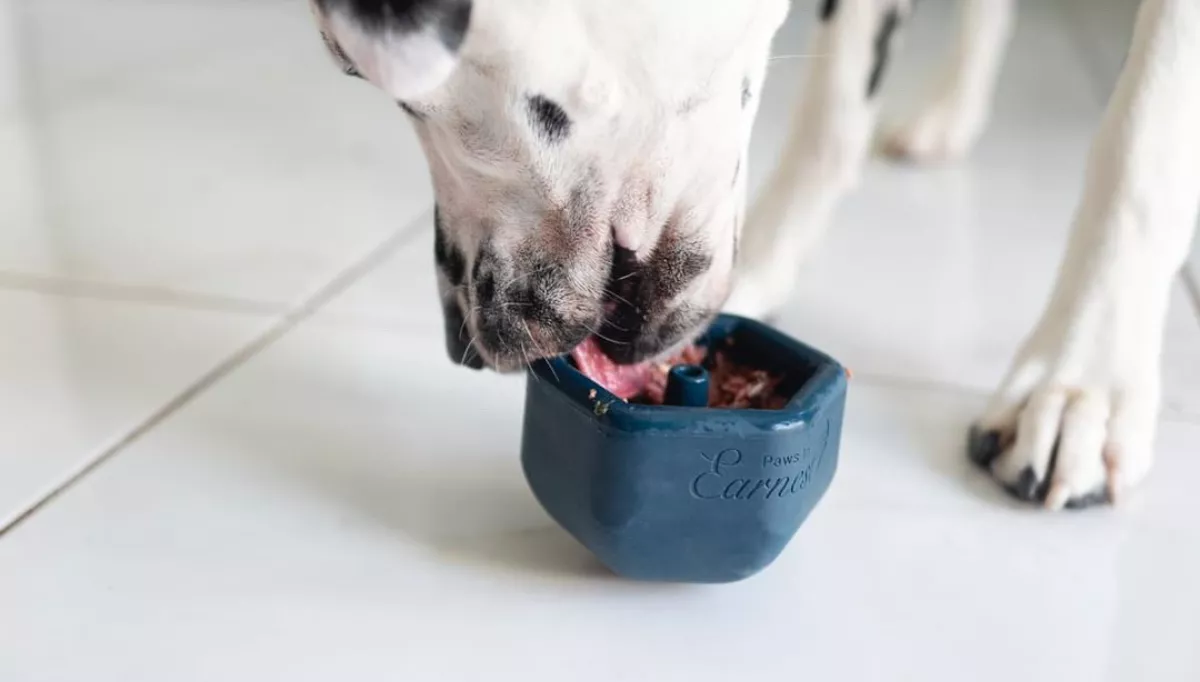How to Add Enrichment to Your Dog’s Life


When deciding how to choose life-enriching activities for your dog, it all starts with their personality.
Every dog has unique instincts, preferences, and needs, and understanding these is key to providing the right kind of enrichment. For some dogs, nothing beats the thrill of a good chase, while others find satisfaction in chewing or foraging for treats. Tailoring enrichment activities to your dog’s natural behaviour can make a world of difference in their overall happiness and well-being.
Why Enrichment Matters
Providing enrichment is essential to ensuring that your dog stays mentally stimulated. Dogs who are bored or under-stimulated may resort to undesirable behaviours like excessive barking, chewing on furniture, or even anxiety-driven actions. By meeting their enrichment needs, you’ll have a more content, relaxed, and well-behaved pup. Meeting their needs will also increase the success of any training you do together.
Think of enrichment as enabling your dog to enjoy their favourite hobbies. And, just as the people in your life have different hobbies, their dogs will love different activities. The key is to experiment with different options and see what your dog enjoys the most.

So, how do you get started?
Identifying Your Dog’s Enrichment Style
Start by observing what your dog enjoys most. Do they love to chase things, chew on toys, or destroy anything they can get their paws on? Which of these do you see your dog choosing to do when the opportunity arises?
Hunting: Chasing, Stalking, Shaking and Pouncing.
Some dogs love the thrill of stalking and chasing. Games like tug-of-war and toys like chasers are perfect for satisfying this instinct.
Chewing: Chews, Sticks, Furniture…
For dogs who love to chew, providing safe, durable chews (like natural rubber, coffee wood, or natural chews) can help prevent destructive chewing.
Destruction: Toys, Mail, Anything they get their paws on!
Dogs drawn to destruction will create their own fun. Creating destruction boxes out of old packaging, toilet rolls and worn out clothing gives an outlet without sacrificing your home.
Foraging: Scavenging, Sniffing through the undergrowth.
Many dogs love sniffing out food, which taps into their natural instincts. Scatter food in your garden and cue them to “find it”, or use snuffle mats or rolled up towels to engage their noses inside.
Puzzles: Causing mischief due to their working brains.
Brainy dogs need mental stimulation just as much as physical. Puzzle toys, interactive feeders, or DIY games like the “cup trick” (hiding treats under cups) can keep their minds sharp.
It’s likely that your dog enjoys a few of these, plus some of the self-explanatory extras I have listed at the end. By identifying which of these activities your dog naturally gravitates towards, you can focus on enrichment that they’ll truly enjoy. Not only does this make for a happier dog, but it also helps reduce how often they ‘find’ their own fun.
Simple Ways to Add Enrichment
Here are some easy ways to incorporate more fun and stimulation into any dog’s day-to-day life:
Rotating Toys: Rather than offering all your dog’s toys at once, try rotating them. This keeps things fresh and exciting without the need for constant new purchases; saving money and the environment too!
Interactive Feeders: Trial giving your dog their breakfast in something which uses their brain more than a standard bowl, for example:
- Wet or raw food could be spread across a lick mat
- Kibble could be scattered through grass in the garden, or into a snuffle mat or plaited toy (strips of old fleece plaited and tied) inside the house
- For braver dogs, kibble could also go into a toy your dog has to push about to slowly release the food, such as a treat ball or a ‘Kong Wobbler’
'Sniffaris’ (Sniffy Walks): A simple yet powerful form of enrichment is allowing your dog time to really sniff during walks. Letting them explore with their nose uses their brain and releases calming hormones. Try varying your walking route or visit different parks to provide new environments full of new smells; even consider having a specific lead set up that let’s your dog know that they can choose the route.
Create Foraging Opportunities: For dogs that love to sniff and explore, you can also add foraging activities to their routine. Initially, hide or scatter their kibble or treats around the house or garden and encourage them to search for it. Eventually, you can also do this on quiet parts of a walk. This not only satisfies their natural scavenging instincts but also encourages problem-solving and focus.
DIY Enrichment Boxes: You don’t need fancy equipment—an old cardboard box filled with treats, toys, and interesting smells can keep your dog entertained for hours. For dogs who enjoy tearing things apart, you can fill boxes with paper and hidden treats, allowing them to safely shred and forage for rewards.
Incorporate Training as Enrichment: Short, fun training sessions are great for mental enrichment. Teaching new tricks or practicing cues works your dog’s brain and keeps them engaged. You could even try teaching them to solve small puzzles, like learning how to open a treat-dispensing toy.
A Few Other Enrichment Styles
Whilst the above captures most dogs, there are a few other hobbies that your dog may have:
Digging: If your dog loves digging, you have likely noticed that it’s nigh-on impossible to convince them to stop altogether. Instead, setting up a sand pit with a cover full of toys and treats to find can at least confine it to one area. Another option is to train them to dig on cue, so you can ensure they only dig in safe off-path areas when you’re out.
Contact: Some dogs love a cuddle on the sofa, or a pamper session with the grooming brush.
Playing with water: Hosepipes, sprinklers and paddling pools are perfect for water-loving dogs. Or, just simply heading out to your local dog-safe creek.
Dog Sports: Some dogs love a human-dog hobby. Some options to look into include Canicross, Treibball, Hoopers, Nosework, Flyball and Mantrailing.
Final Thoughts
There's good reason why dog trainers start with enrichment; taking a look at what a dog's whole life looks like before they start any training.
Often, a 'training' issue can actually be resolved with the addition of something a dog is missing from their instinctual needs, plus a little management (such as a baby gate in the home). In addition, a dog's ability to take on training actually depends on their natural needs being met!
So, take a look at your dog's daily life, and see if adding to their chosen 'hobby' makes both your lives that bit better,
